

CarExpert.com.au
The CarExpert team's favourite cars of 2025
16 Hours Ago
Genesis’ crucial mid-size SUV has a lot going for it. We try the base 2.5T to see if it’s a viable alternative to the usual European suspects.

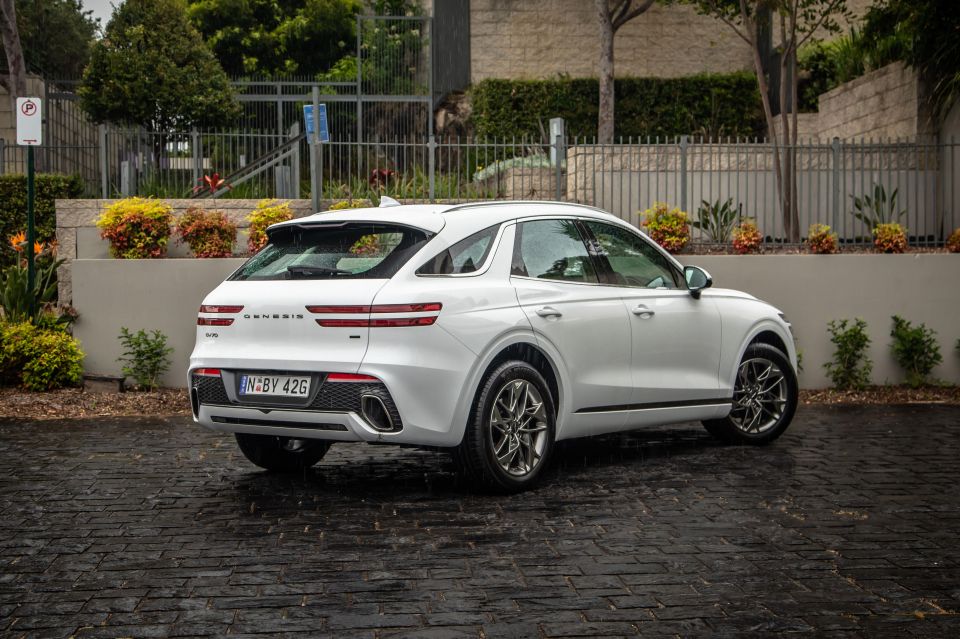

Journalist
New from
$66,400
excl. on-roads

Journalist
New from
$66,400
excl. on-roads


Journalist
New from
$66,400
excl. on-roads

Journalist
New from
$66,400
excl. on-roads
Quickly see how this car stacks up against its competition. Select any benchmark to see more details.
Where expert car reviews meet expert car buying – CarExpert gives you trusted advice, personalised service and real savings on your next new car.
Well, this is it. The big one for Genesis – not in size, but in significance for the fledgling luxury marque moving forward. No more dry running, repositioning, reimagining, or jostling for position on the premium motoring landscape.
The Genesis GV70 needs to fire. This is the model that must sell, that must put Genesis on Aussie soil with more volume and visibility than the Korean marque has experienced to date.
The sedans laid the groundwork, the bigger GV80 made a statement of intent. Forget any inevitable ‘future product’: the mid-size SUV is, in the modern era, is the anchor point for premium motoring success. Lest Genesis has some Plan B fallback to become a niche sports car maker…

Right here is the base 2022 Genesis GV70 2.5T rear-driver as a cleanskin, with no options fitted. It’s the breed as in its most honest form against European rivals.
It’s the most genuine sample of its core goodness – or badness – without the distraction of added glitz or window dressing for an artificially inflated outlay.
As it turns out, as a review subject, it’s a bit of a mixed bag.
At $66,400 before on-road costs, our rear-driven turbo petrol four-powered variant is as thrifty as the GV70 gets. All-wheel drive adds a small upcharge ($68,786) before walking into the all-paw diesel 2.2D AWD ($71,676) and hitting the pealk at the six-pot 3.5T AWD Sport ($83,276).
Basically, trim lines cost extra – a fair bit extra in some cases – with the four-cylinder versions available with Sport Line ($4500), Luxury ($11,000) and ultimate Sport Luxury amalgamated ($13,000) packages offered optionally. The flagship 3.5T AWD Sport’s only big-ticket option is adding Luxury accoutrement ($6600). Fancy matte paint is a $2000 upcharge.
How does that fare against the competition? Alfa Romeo’s base Stelvio is, at $64,950, a little cheaper, but the usual German suspects in Audi Q5 45 TFSI quattro ($70,600), BMW X3 sDrive20i ($73,900) and Mercedes-Benz GLC200 ($74,976) demand more investment.
Meanwhile, the real bargain of the segment is the ageing Lexus NX300 that kicks off from $57,500 but brings a host of variant and powertrain (including hybrid) choice for GV70 2.5T’s circa-$67,000 ask. Volvo’s entry XC60 B5 Momentum is, at $67,990, right on the proverbial money.


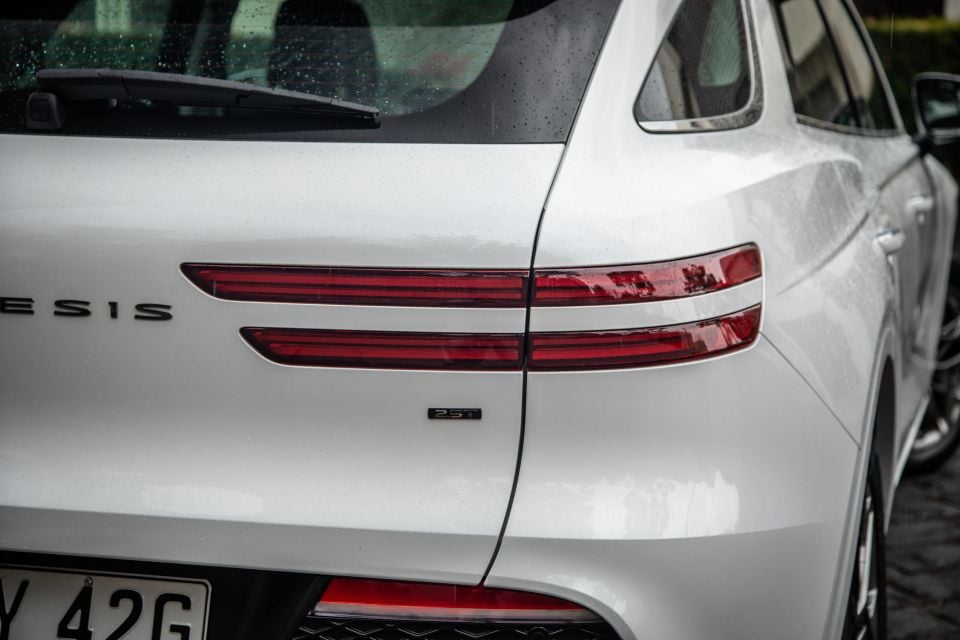
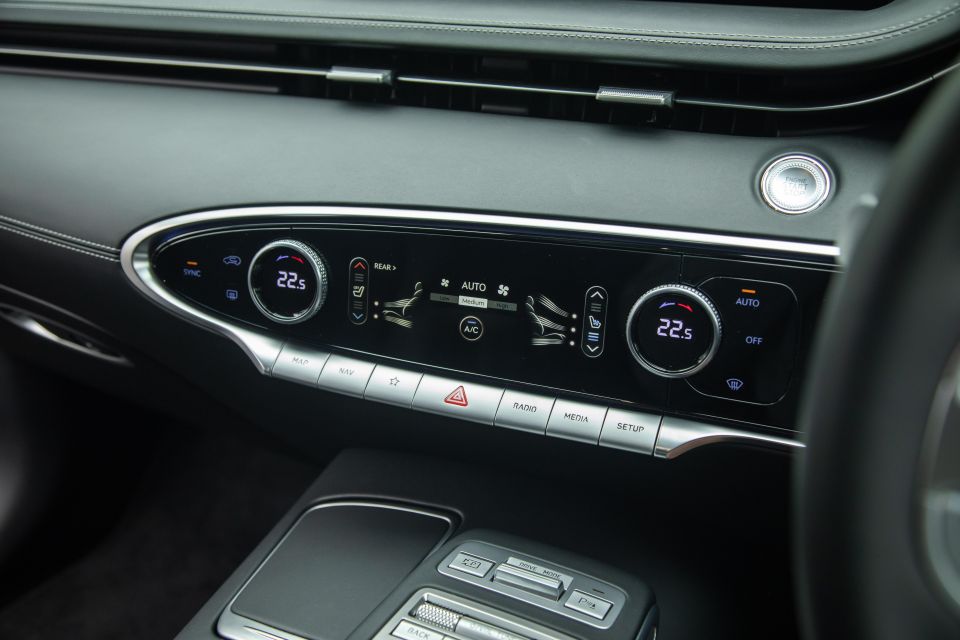
Buy your new car without the stress. It's fast, simple and completely free.

Great service from Travis and team, second time I have used this business would not hesitate to recommend them to anyone
Craig C.
Purchased a Ford Ranger in Sunshine Coast, QLD
CarExpert helped Craig save thousands on his Ford Ranger, now let us save you on your next new car.
Find a dealOutside of the inimitable Genesis approach to styling inside and out, the GV70’s boldest statement is in value. There’s very little in the ‘no line’ grade’s impressive equipment list that suggests an entry-level offering.
Highlights include:
There’s absolutely nothing ‘basic’ or ‘entry’ about the equipment fit-out. In fact, it’s so solid as a base model there’s no need to venture into pricey trim packages – unless you simply can’t live without extra-supple Nappa hide or fancy 3D digital instrumentation.
Sheer kit for your dough alone warrants short-listing the GV70 as premium SUV even if you’re drawn towards favouring a segment competitor.
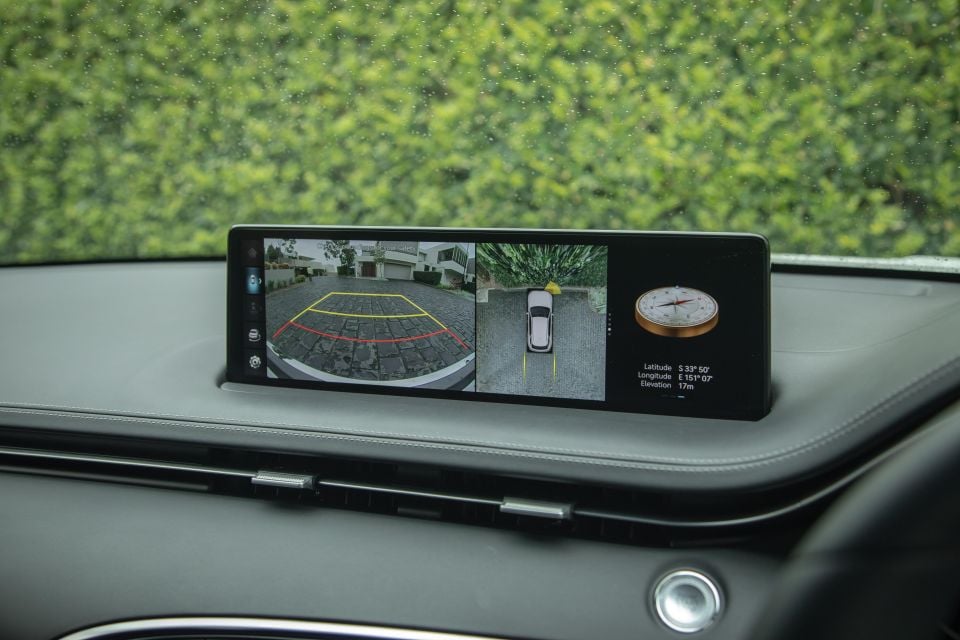
As with equipment, there’s absolutely nothing skimpy about the entry GV70’s safety fitment.
All-speed autonomous emergency braking (and its related adaptive cruise control) includes junction – or turning – assist, lane-change assist and lane departure warning, blind-spot assist with the aforementioned blind-spot camera systems, Lane Following Assist (lane centring), evasive steer assist, rear cross-traffic alert, intelligent speed limit assist, safe exit warning and driver attention monitoring.
All GV70s bring eight airbags, including a front centre bag, as well as an active bonnet.
Absent from the medium SUV’s credentials, though, is an ANCAP or Euro NCAP rating. Despite five-star assessment for the rest of the Genesis line-up (G70, G80 and GV80), the GV70 had yet to be tested at the time of writing.
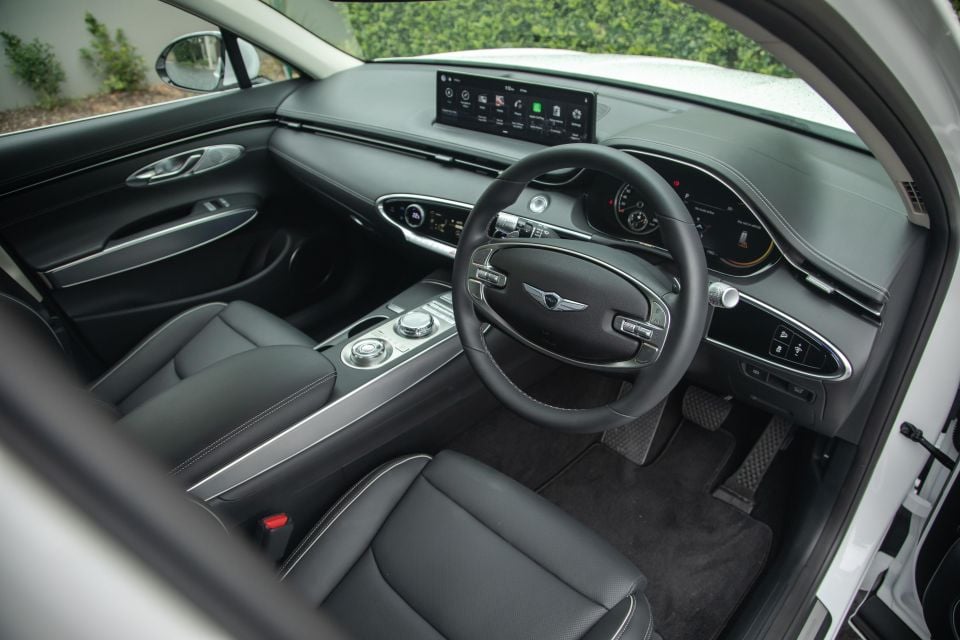
Let’s face it: the Genesis approach to styling and design will make or break the deal, outside and in.
I’m a fan. The GV70 is different and distinctive, no Euro facsimile in almost every respect. It’s tamer than the bullish, ostentatious GV80 yet suitably upmarket in vibe. It’s nicer viewed from the rear than the front, perhaps, but the 19-inch wheels eschew the huge-rimmed silliness that seems to plague most rival SUVs.
There’s maturity and balance that rises above what you’d expect from a $67,000 prospect. This particularly rings true in the cabin. If you want champagne ambience on a (boutique) beer budget, you’ll find it in the base GV70.
That its slick cabin design, with its neat oval motif, feels unlike anything from Europe is perhaps its biggest charm. And it’s minted with no hint of cost-consciousness or the vaguest suggestion anything has been parts-binned from Hyundai, despite the mainstream brand’s recent lunge into the luxury world, particularly in the area of digital displays.
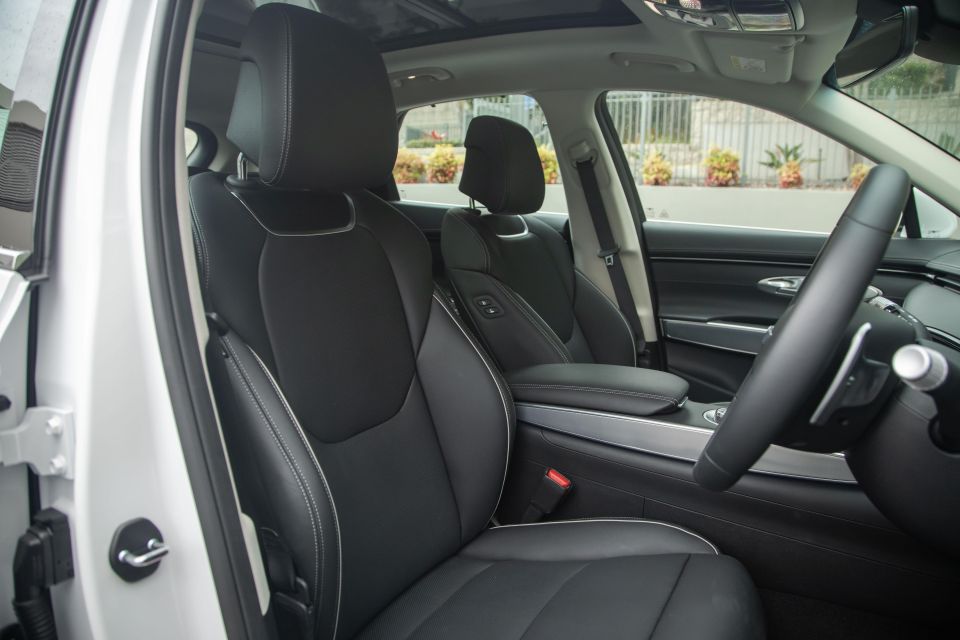
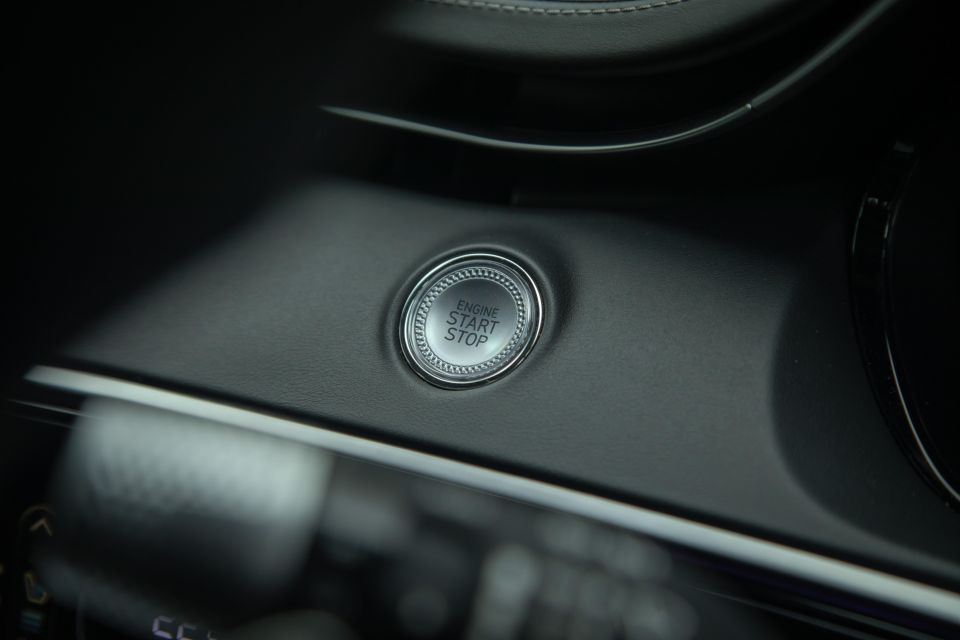
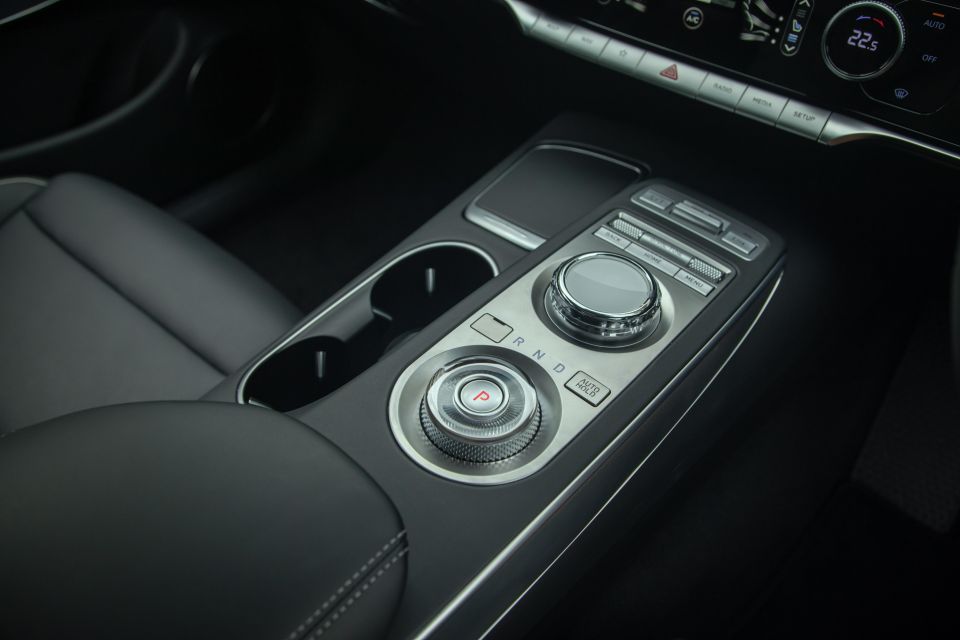

The clean format, extended trim (dash, doors, console) and richness in the touch points and interfaces, especially the delightful climate control array and its ‘floating rings’, really don’t hold back in their premium push.
Not all of what appears metallic feels as much to touch, but the quality, look and feel of the switchgear and buttons is first-rate, and a cut above some of the execution in the Genesis sedan line, bar perhaps the plasticky door handles.
It’s airy and roomy, with genuinely comfortable seating that’s supportive and relaxed. There’s not a hint of sporty intent or silly carbon-fibre-look frivolity, right down to the like-it-or-lump-it two-spoke wheel design. It’s all the better for it.
The display hardware is crisp and, despite its stylised nature, it’s easy and intuitive with its interface. All except, perhaps, the lovely tempered glass transmission controller and infotainment dial positioning – at first, it all too easy to reach for reverse only to arrive at different radio station, though you do acclimatise to whims quite quickly.
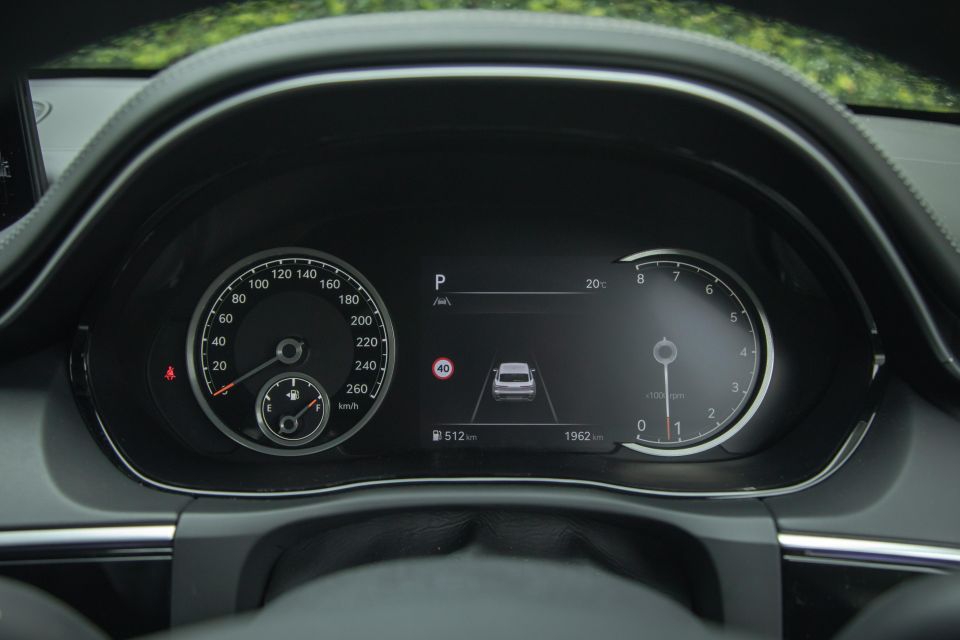
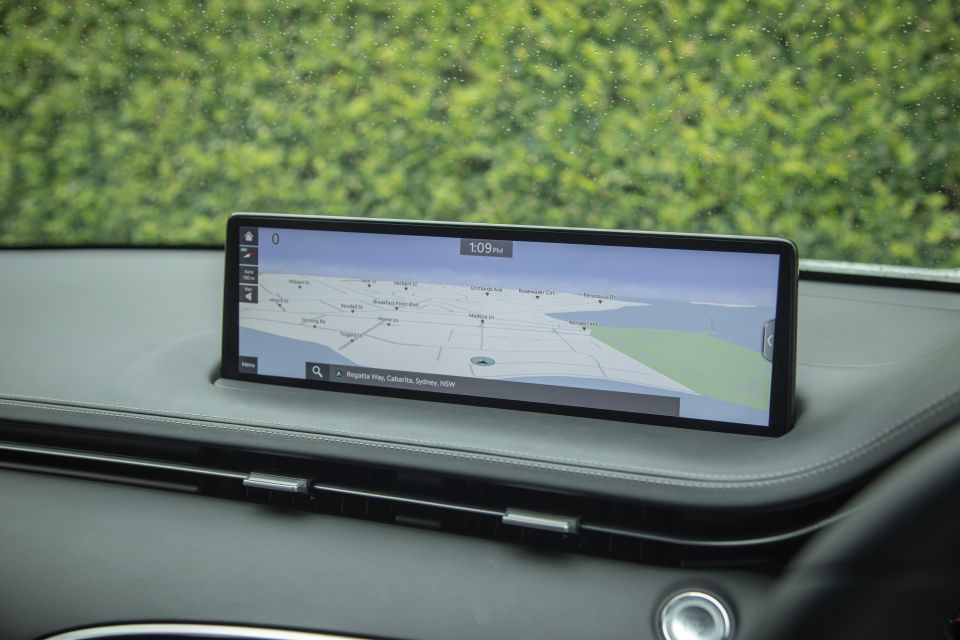

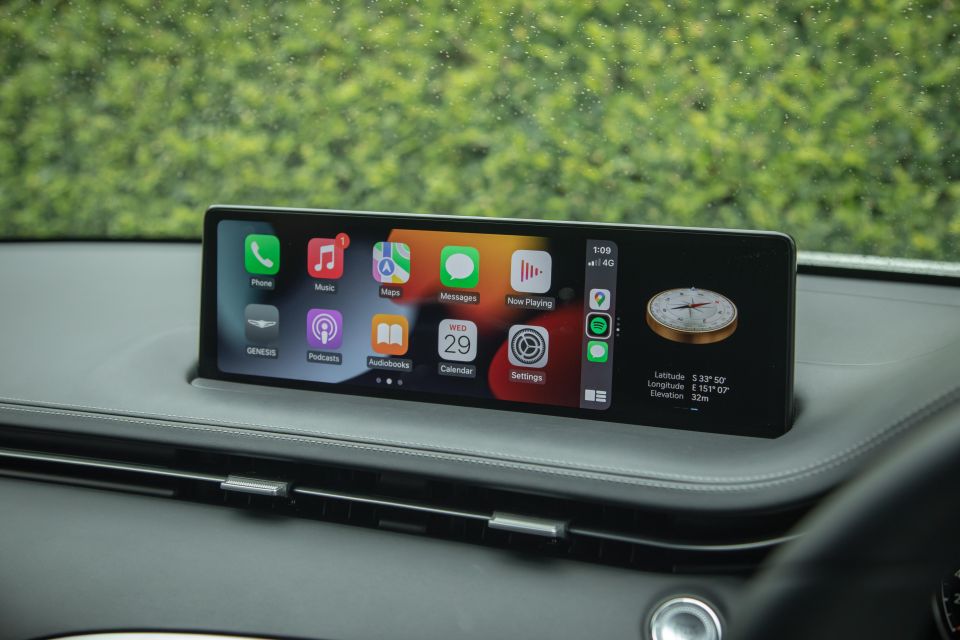
The half-digital instrumentation is also a quirky, if mostly because it shifts the ‘centre’ display content strangely to the right.
The whole blind-spot camera trick is fast becoming a Genesis (and Hyundai) staple. Here both sides of the car are displayed in the right instrument roundel – in GV80 it alternates to respective sides of the cluster – and I still reckon the good old wing mirrors are clear and safer options.
It’s smartly packaged, too, with good stowage. There’s nothing clumsy or weird when it comes to placement of cupholders and the like, though there’s no logical key cubby. Even the sloped inductive phone cradle, that slants your phone out of view, is pretty cool.
The huge 14.5-inch infotainment setup is very cool, although if its location is one helluva stretch to use as a touchscreen – tasking the rotary controller with the bulk of inputs, but it’s easy enough to use and the system is both fast-reacting and intuitive to navigate.
It reboots phone app streaming quickly on start-up and sidesteps the clumsiness plaguing the likes of Lexus and, to some extent, Audi infotainment. Dual USB ports in both rows of seating are also nice inclusions.
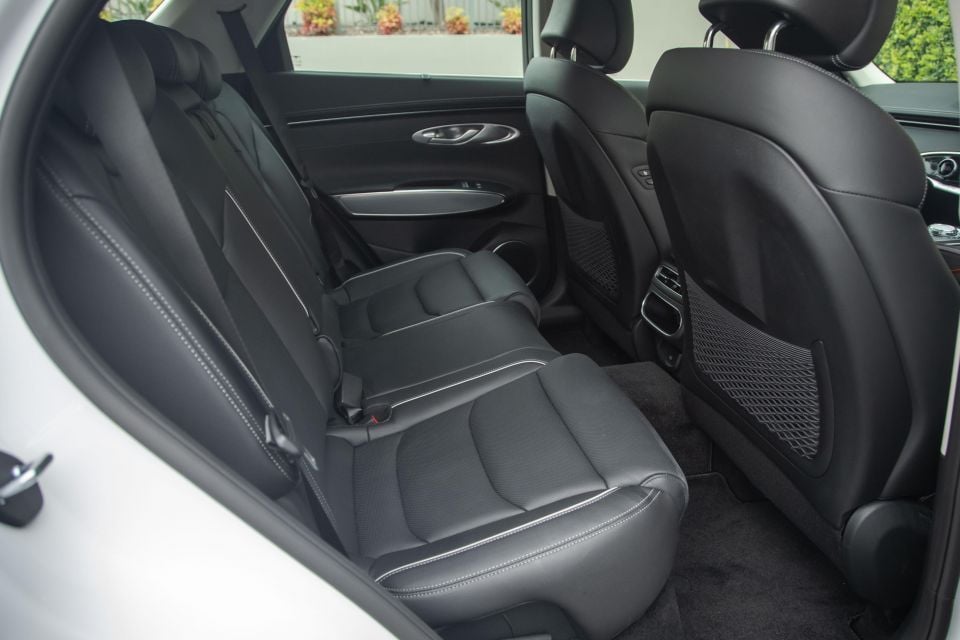
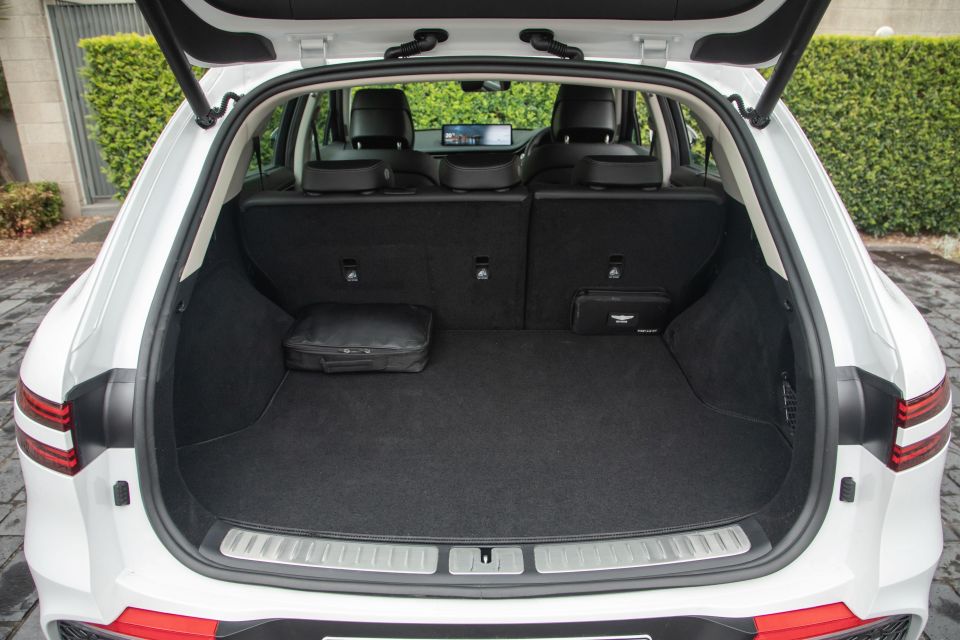
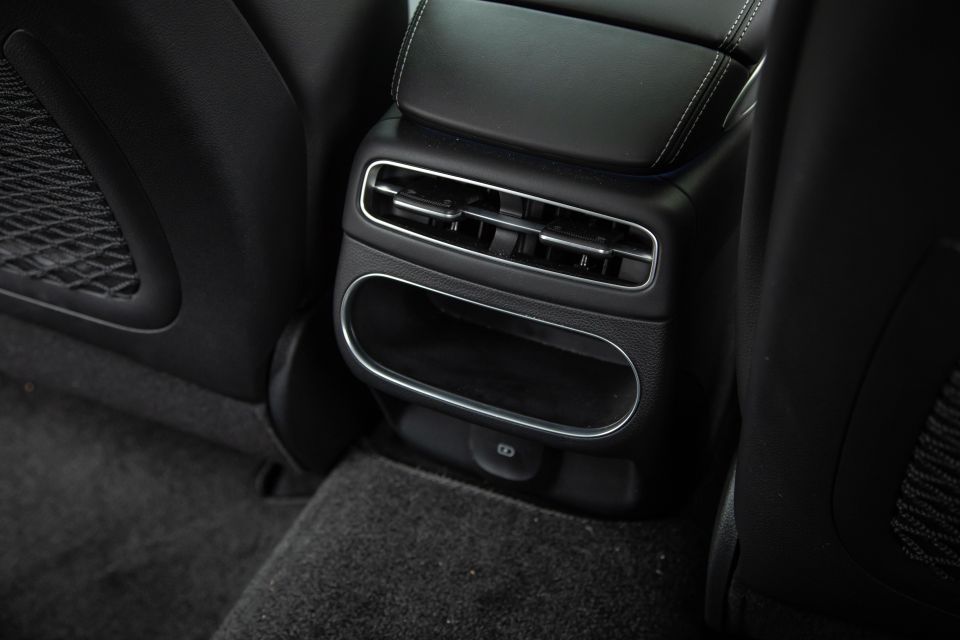

Row-two spaciousness is decent rather than generous, but it doesn’t unnecessarily impinge on leg, head or elbow room and it’s comfy enough for adults in the outboard positions over long trips. The high seat base and low window line allows ample outward viewing for small kids, too.
The rear seatbacks offer handy tilt adjustment and clever remote control for the front passenger seat, in its side bolster, allowing rear passengers to tune in more legroom when seated in the back.
Air vents, a modest storage cubby and cupholders in the arm rest tick essential boxes, though the chrome hangers on the B pillars and manual blinds are nice touches for a base variant.
Boot space is a reasonable 542 litres with quite a high load level in part due to the space-saver spare housed under the floor. The 60:40 split rear seatbacks stow, via remote levers in the cargo area walls, to liberate 1678 litres.
It’s fully carpeted with tie down points and a 12-volt outlet in the driver’s side wall, too.
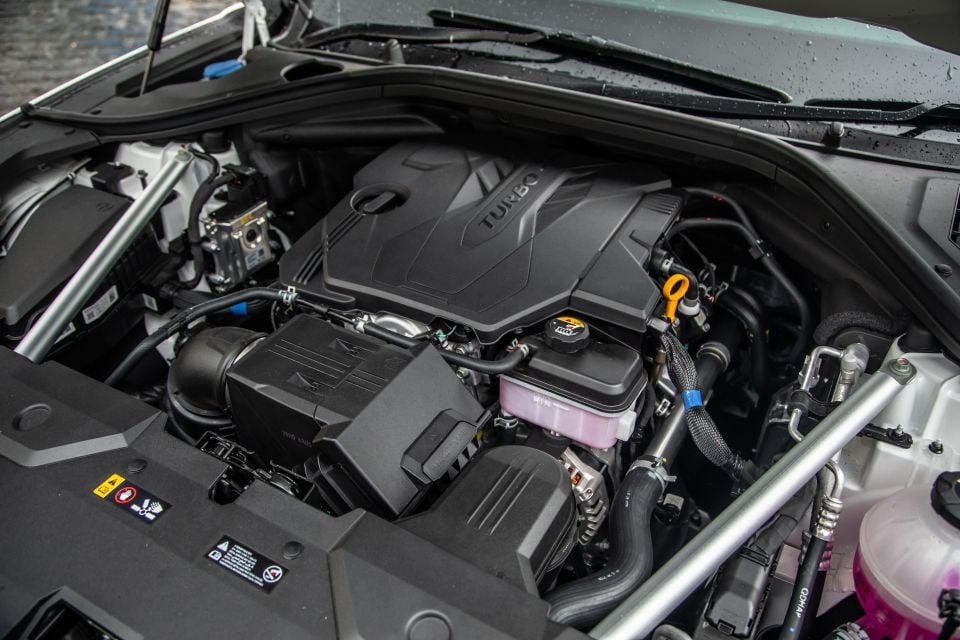
Where the default capacity for the entry premium mid-sized SUV set is usually 2.0-litres, the GV70 enters the fray with a turbocharged 2.5-litre petrol four – the same unit used in the GV80 – producing a healthy 224kW at 5800rpm and 422Nm in a 1650rpm-4000rpm torque band. It runs on a 95 RON minimum for its 66-litre tank.
It’s a Euro 5-compliant package backed by an in-house developed eight-speed torque converter automatic and in our tested rear-driven guise returns a claimed 9.8L/100km combined. Opting for all-wheel drive ups consumption to 10.3L/100km.
The GV70 also adopts a conditional coasting mode, that decouples the powertrain from throttle to milk a little extra fuel efficiency.
While the 2.5T trumps many of its rivals on outputs, it’s also a bit thirstier. On test, our rear-driver returned consumption impressively close to its advertised claim.
Performance? Its maker claims the 2.5T in either format will dispatch the 0-100km/h sprint in 6.1-seconds. It’s no slouch. On that, towing is rated, like the rest of the range, at 2200kg braked.
Suspension is strut front and five-link rear, passively damped.
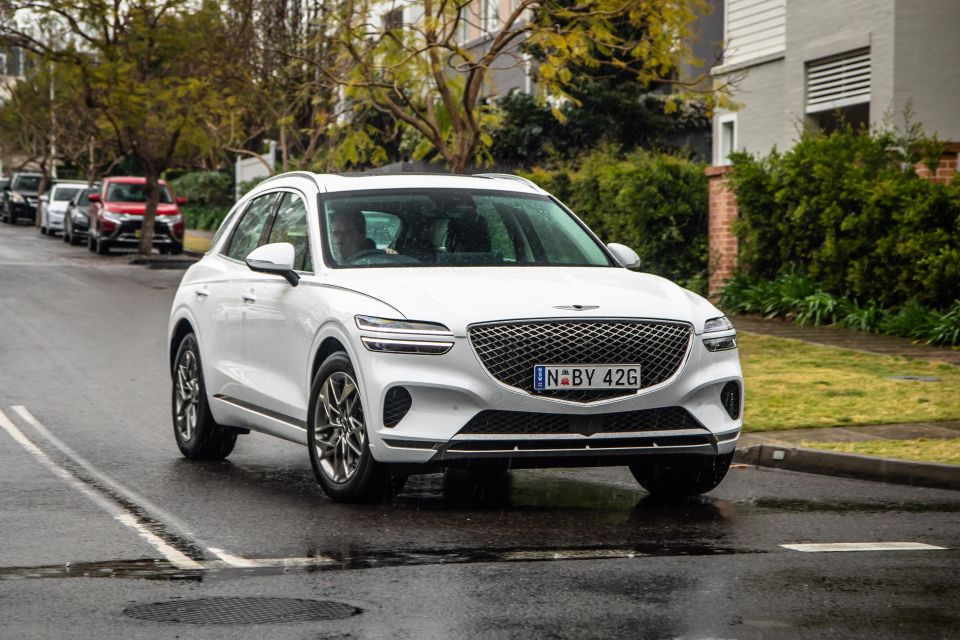
On the road, the GV70 feels solid and substantial. There’s a good reason for it; it tips the scales at nearly two tonnes.
Some of that ‘excess fat’ is due to the extensive use of sound deadening: the engine compartment is sealed and partitioned, for instance, and the doors are triple sealed. The upshot is it smothers noise, vibrations and general harshness impressively well by design, and the effort invested by Genesis is returned in a nice premium sheen befitting its luxury pitch.
It’s just a shame the powertrain is so unresolved.
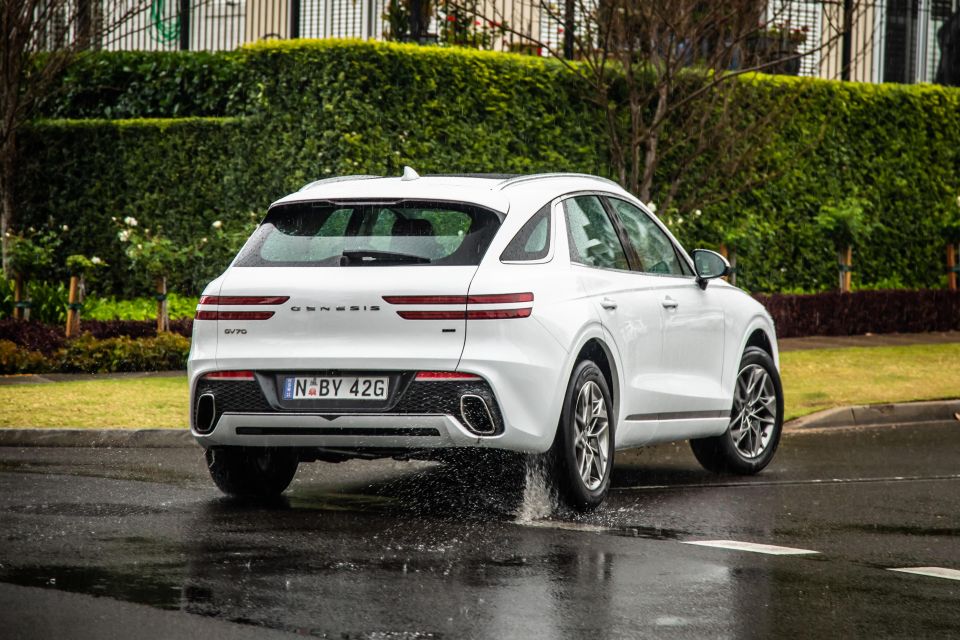
Dig in and thrust is certainly substantial enough to get the Genesis moving satisfyingly swiftly. It’s just that it not quite so impressive when you back off.
At low speeds and under light throttle, engine response is a little hesitant. More annoyingly, the homespun transmission is prone to nipping and faint shunting, really taking the polish off the general refinement.
Opting for Sport rather than Eco or Comfort drive modes does tighten up the driveline somewhat, but it returns a powertrain character that’s simply too eager and, well, effervescent for luxury cruising. There’s also quite a pregnant pause between suddenly trouncing the right foot (in Comfort mode) and the powertrain manning the battle stations.
Otherwise, on the balance of sedate driving around town the GV70 maintains dignity and decorum. It’s even nicer on the open road, where the wind and ambient noise is deftly suppressed.
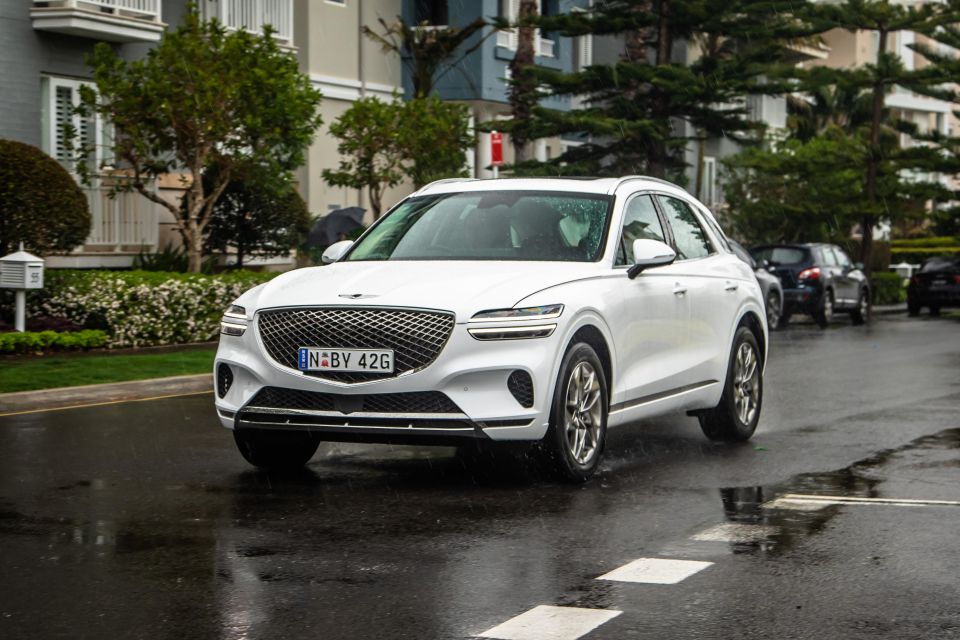
The ride quality is certainly on the firmer side of middling, taut and strident in body control with no hint of floatiness. But it’s not brittle across speed humps or sharp-edged road imperfections, with just enough compliance in the damping to round off the ride comfort.
There’s also a hint of sportiness in the steering feel, which is middleweight in assistance but not to the point of being overly taxing during low-speed manoeuvres and while parking.
On that, the camera system is fantastic. Both forward and reversing feeds – even the overhead view – are large, bright and pin sharp. Again, I’m not convinced the blind-spot camera system is all that real-world beneficial though there no harm in its addition.
If anything, with the task of parking, the only thing really missing is an auto park brake rather than the fiddly manual push-pull switch as fitted.
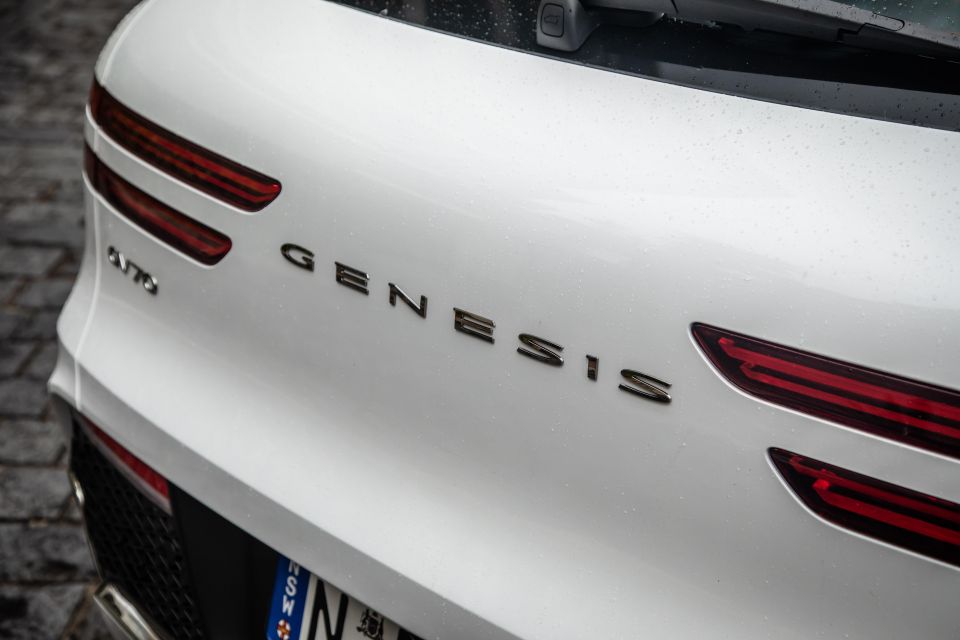
The GV70 comes with a five-year, unlimited-kilometre warranty, which matches Mercedes-Benz and is superior to the basic surety offered by Audi and BMW.
But where Genesis is gunning hard is in aftersales. The first five years of standard servicing, or 75,000kms, is free.
There’s also complimentary pick-up and return of your GV70 for servicing and, conditionally, a complimentary courtesy car for the interim.

Where expert car reviews meet expert car buying – CarExpert gives you trusted advice, personalised service and real savings on your next new car.
As such an important model for its maker and the potential slingshot for the brand, the GV70 delivers in a good many areas.
But it’s really this entry 2.5T RWD version that bundles in the value big time, and backs it up with a holistic package that feels certifiably upmarket and lays on a thick layer of appointments you really don’t expect for the money.
Luxury is, by definition, the concept of bringing an often unnecessary indulgence for the sort of outlay one chooses to spend. But the base GV70 loads enough of in as standard you mightn’t see any need to indulge further. Interesting, then, Genesis predicts the rear-driver will be the least popular with buyers, with a projected 10 per cent slice of the sales pie.

If there’s a downside, it’s the powertrain. Or, more specifically, calibration rather than a lack of talent or outputs. There’s probably a relatively small ‘fix’ to cure its general drivability ills, but the ills are there and demand some attention to bring out the 2.5T’s best.
Rear-driven compromise? Not that we can see. It’s more affordable to buy, cheaper on fuel, and no less quick or capable as a towing machine compared to the all-paw version. So why not?
Contending with brand recognition and confronting the prickly issue of resale value is the long game for Genesis in Australia. But in short, the GV70 offers (mostly) the right stuff necessary to help propel the local arm’s commercial fortunes forward.
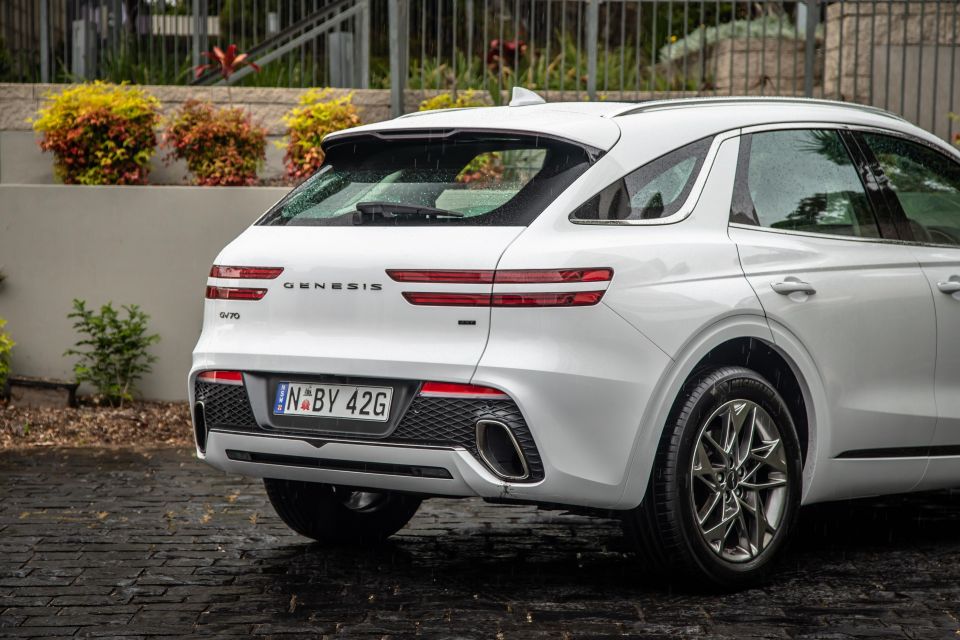
Click the images for the full gallery
MORE: Everything Genesis GV70
Where expert car reviews meet expert car buying – CarExpert gives you trusted advice, personalised service and real savings on your next new car.


CarExpert.com.au
16 Hours Ago


Damion Smy
1 Day Ago


Damion Smy
2 Days Ago


Josh Nevett
2 Days Ago


Max Davies
2 Days Ago


Ben Zachariah
3 Days Ago